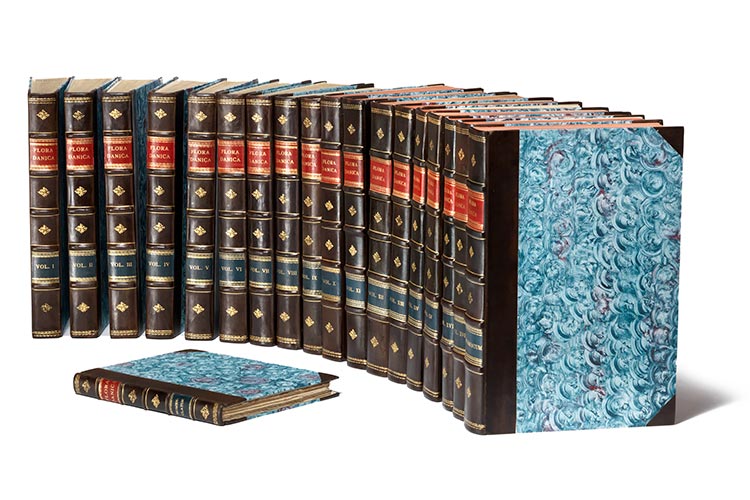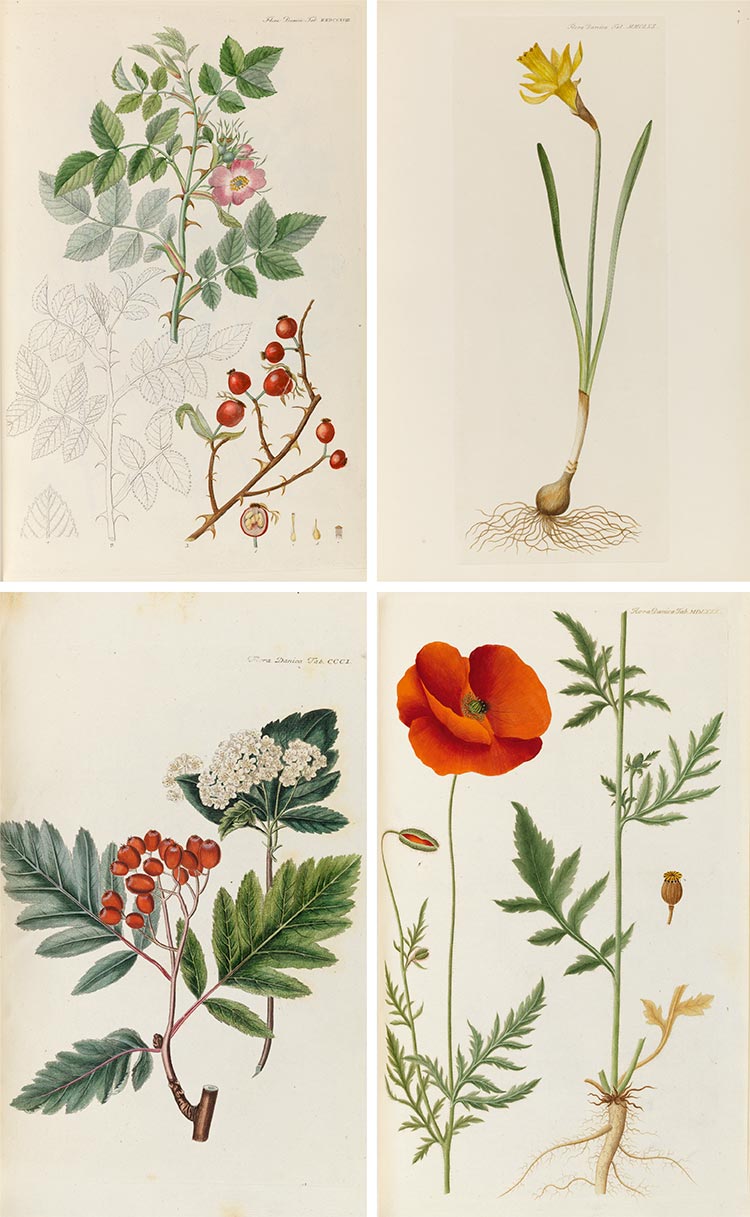
Flora Danica – a World of Knowledge and Beauty
With its impressive 3240 plates published in booklets between 1761 and 1883, Flora Danica is not just the world's largest publication on flora, but also the work that has taken the longest to complete in the history of Denmark. We can now present the complete work at auction on 17 September.
A (Delayed) Child of the Enlightenment
It all began in 1761 with a plate depicting a cloudberry and a prospectus supported by King Frederik V. More than 120 years later, the magnificent Flora Danica was finally completed, and ever since, the iconic work has enjoyed the status of being the world's largest and most beautiful publication on flora.
The plan was initially that the project would take 10 years to complete, and the idea arose at a time where all of Europe was focused on collecting and recording findings from the natural world. Therefore, the purpose of the project was entirely in the spirit of the Enlightenment. The goal was to expand people’s knowledge of plants and the many uses of them. At the time, the dependency on plants was significant. Through a firmer knowledge of both the useful and harmful properties of wild plants, the use of local resources could be optimized, which in the end would benefit the country's overall economy. Flora Danica was published in "The Languages of the Country, Danish and German". However, the work was also published in the scholarly language of the time, Latin, to attract an international audience.
Cataloguing the Danish Flora
It was the German-born G.F. Oeder, who would be responsible for the release of Flora Danica. Oeder was the first in a long line of editors-in-chief on the project and also Denmark's first professor of botany. Not long after he was appointed to his position in 1752, he began planning the publication project as well as the layout of a botanical garden at Amaliegade in Copenhagen. Both projects were intended to map out the Danish flora, which at that time included the flora of the duchies of Denmark, Norway, Iceland, the Faroe Islands and Greenland. After Oeder, nine different botanists lead the work on the publication of the Flora Danica, including Theodor Holmskiold, the man who had the idea for the Flora Danica porcelain service – the magnificent hand-painted service decorated with pictures from the publication.
Scientists, Copper Printers and Illustrators in an Excellent Collaboration
Flora Danica was created in a collaboration between scientists, copper printers and illustrators. It was the publishers themselves who had to travel all over to gather information about the flora, and this work was not always easy. Just getting around Denmark at the time was quite difficult, and if you were to visit Norway, it could mean a direct endangerment of your life. But the interest concerning the Flora Danica project continued to grow after the initial instalments had been published. More and more people submitted findings to the publishers or took part in the collection of plants. When a new plant had arrived, a watercolour was produced. The copper printers then incised the plates in accordance with the watercolour. After the printing in black and white, the plates were hand-coloured with gouache which covered the black printing ink. Most of the copper plates from Flora Danica still exist and are located at the Natural History Museum of Denmark in Copenhagen. Some printing plates were lost after the fire of 1884 at Christiansborg Palace, because the plates were stored in the attic of the palace. These have subsequently been reproduced.

|

|
|
|
Gallery Talk: Learn More About Flora Danica!Monday 16 September at noon our book specialist Lærke Bøgh will talk about the publication up for auction at a presentation entitled Flora Danica – a World of Knowledge and Beauty. Everyone is welcome! |
A Precious Publication
Today, no one really knows how many complete copies exist of the Flora Danica. Outside Denmark, the work is known to exist in less than 30 copies. In his time, the King ordered 55 copies to be made, which were distributed among bishops, prefects, selected scientific institutions, scientists, and the nobility. Today, complete copies of the botanical work are very rarely on the market.
Other Publications up for Auction
At the auction, several other copperplate engravings will be sold, including a fine specimen of Widewelt’s Monumenta Fredensburgica Iussu Friderici V Erecta from 1769, which illustrates the sculptures in the garden of Fredensborg Castle. Another work up for auction is the Frederik II bible from 1589 and a fine set of Laurids de Thurah’s Den Danske Vitruvius from 1746–49.

For further information, please contact:
Lærke Bøgh: +45 8818 1217 · lb@bruun-rasmussen.dk
